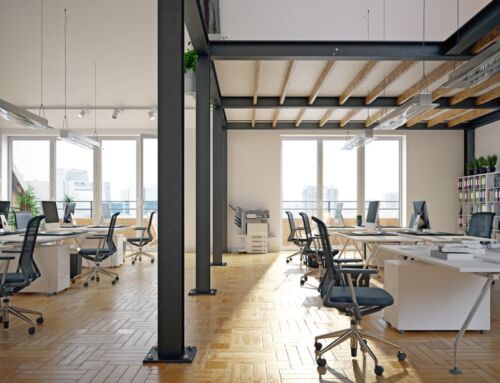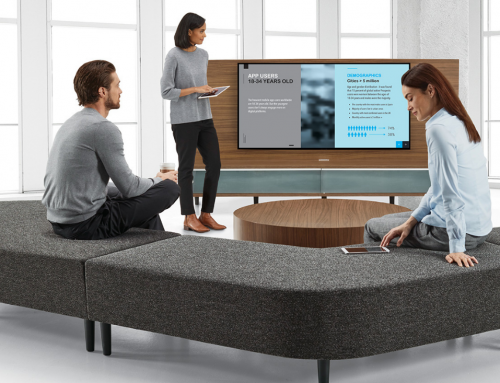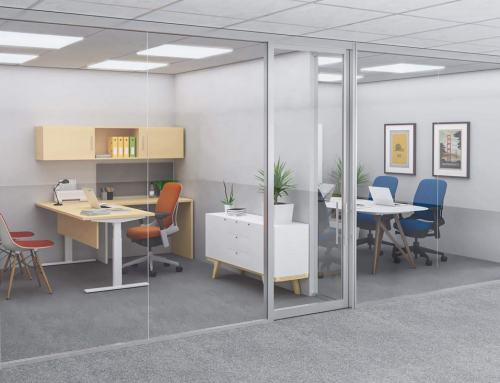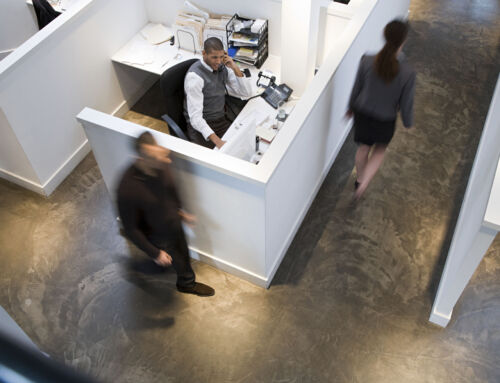Why Modern Office Cubicle Designs is the Best Social Distancing Tool
As companies adjust to the new normal, they’re changing the workplace environment.
As the world begins to recover from the coronavirus pandemic employees will start heading back into the office. Employers need to have a plan in place to make certain their employees can return safely. While the crisis has caused some companies to adopt work-from-home policies, office spaces are hastily evolving for the post-coronavirus era.
In fact, as businesses adapt to the new normal, the modern workplace environment will likely see some permanent changes. Which is why modern office cubicles are going to be the future.
The final straw for the open office?
As thousands of enterprises contemplate restarting their operations, executives are currently evaluating how best to reconfigure existing workspaces. Workspaces that have previously been designed to minimize costs and encourage the face-to-face interactions that can ultimately spread the deadly coronavirus.
Some companies are looking into high-tech methods to enforce social distancing. Tracking interactions, using location-monitoring apps and badges, high-tech health checks, and A.I. surveillance cameras. Other innovations are simpler: stickers to encourage six feet of space between workers, staggering shifts to allow for more spacing, more frequent cleanings, and of course, tons of hand sanitizer.
One of the most valuable innovations, however, may turn out to be cardboard and demountable partitions that transform open-plan offices into something you might have seen in the 1990s.
Cushman & Wakefield is importing practices from its offices in China, where more than a million people have been able to return to work. Besides masks, temperature checkpoints, and a sanitizer, they are rearranging desks and meeting room seating to guarantee social distancing, workers are using disposable desk covers, and dividers are being installed between workspaces.
The cubicle is making its comeback.
Cubicles debuted in U.S. offices in the 1960s with the intent to encourage movement, personalization, and meaningful interactions among coworkers. Robert Propst (designer at Herman Miller) came up with the design for modular, low-cost, cubicle-filled spaces as a remedy to the rows of typing desks that were prevalent at the time.
Over the decades, however, the cubicle instead became associated with a monotonous, regimented, and depersonalized work life. It fell from favor early this century, as Silicon Valley startups adopted open offices to encourage collaboration, and businesses elsewhere copied the idea.
However, the recent pandemic has made people appreciate private, personal space.
To help promote the feeling of an open office workplace while also providing a private space for individuals, cubicles with plexiglass walls or dividers may replace the open office. While short-term plexiglass partitions are currently being installed all over the world, coronavirus will be the reason cubicles return to the office.
Cubicle walls are an ideal tool to contain the spread of respiratory droplets which spread illness, but to be effective, be sure to implement the following practices. (If you’re not already.)
Update ventilation and air filtration.
One way coronavirus has been shown to spread is through expelled droplets when we cough, sneeze, talk, and breathe. While most of these droplets can fall to the ground and dissipate, smaller particles can linger in the air. Improving ventilation and air filtration is one way to help eliminate these tiny, potentially viral particles.
Many large corporations are ready to upgrade their HVAC systems very soon to improve airflow and filter out impurities. If replacing your HVAC isn’t within the budget, portable air purifiers can be used around your space for a fraction of the cost. This will be especially useful if your office windows can’t be opened to help air out your area.
Open office windows instead of using air conditioning.
Researchers from the University of California-Davis and the University of Oregon found that opening windows is an optimal way to control the office climate while inhibiting the spread of coronavirus. Central air conditioners and heaters will re-circulate the air, which can transport viral particles between spaces. However, opening the windows in your office allows air to flow freely, inhibiting the virus from circulating through communal areas.
While not feasible for every office building, if you can, open your office for climate control. If your office building doesn’t allow you to open windows, don’t stand near air conditioning exhaust vents, where particles are often trapped.
Install additional hand sanitizer stations
Hand sanitizing is an easy and effective practice to mitigate the spread of coronavirus. As workers return to the office, companies should consider installing hand sanitizer stations around common areas, like entrances, break rooms, office reception areas, restrooms, and conference rooms, to promote good hygiene.
If your office has already installed hand sanitizing stations in all the common areas, consider including personal stations at employee’s desks. Alternatively, you can provide each worker with their own personal sanitizer, along with recommendations for office hand hygiene.
Enforce office policies for capacity
Creating social distance between employees becomes considerably more manageable when fewer people are present in the building. Many businesses are implementing a phased method for returning people to the office, strategies such as staggering schedules, and facilitating a mixture of remote and onsite work. Communal events, such as buffet breakfast or lunch and large meetings, should be put on hold or adapted to comply with safety regulations.
Convert conference rooms into “officles.”
Though modern office cubicles appear to be returning to popularity due to COVID-19, building owners architects, and entrepreneurs can consider removing one wall in conference rooms to help foster a healthy workplace. These spaces are often known as “officles” since they are a mash-up between an office and a cubicle. Since these newly renovated spaces will only have three walls, air can flow much more freely throughout the area, potentially preventing germs from gathering in a single location. It’s an innovation in modern office furniture.
Create conference areas rather than rooms.
While officles are one way to adapt conference spaces for the new normal, open corners of an office can be used as a makeshift or even a permanent replacement of the closed conference room concept. Like officles, corner conference rooms help promote airflow and allows employees to socially distance from one another.
For a complimentary social distancing consultation, contact us today!




